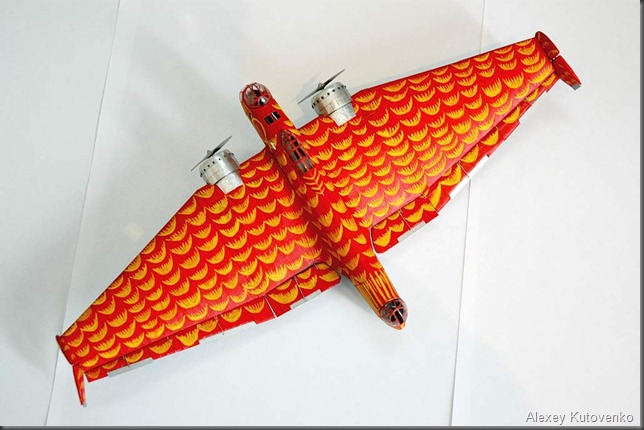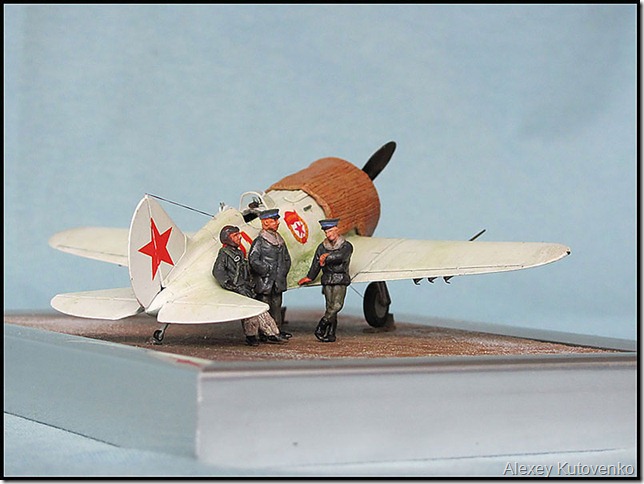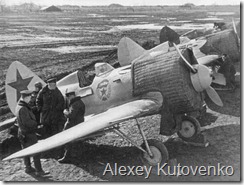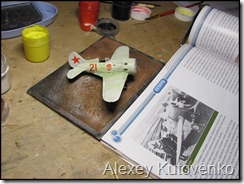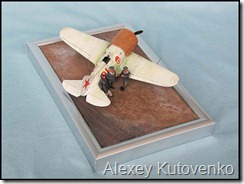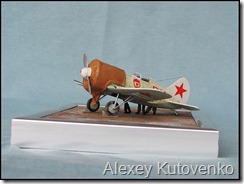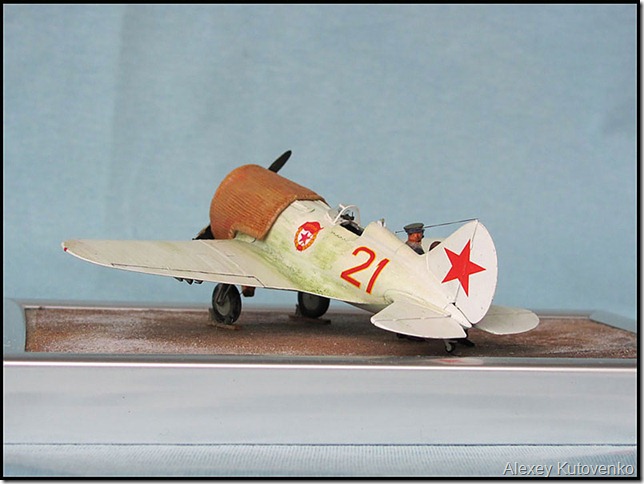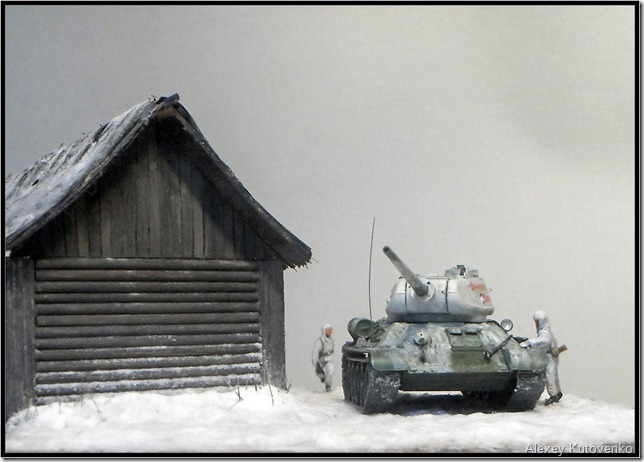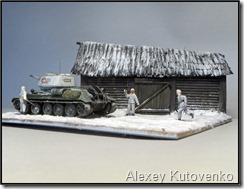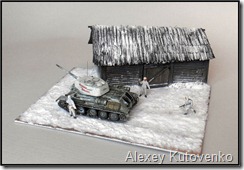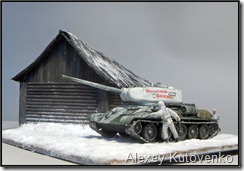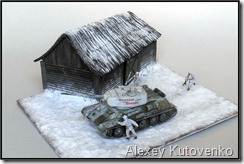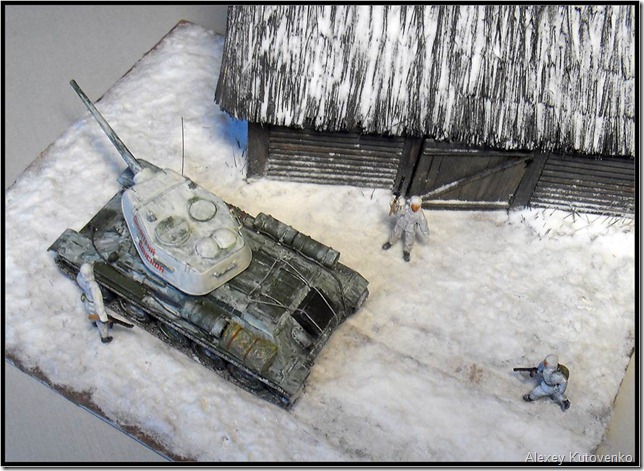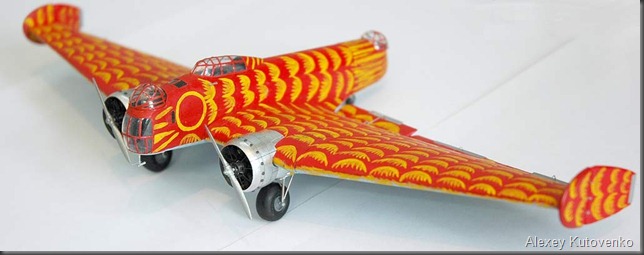
During 1930-th years in Soviet Union appeared a number of tailless and flying wing airplanes constructions. They were built by such constructors, as Cheranovsky, Moskalev and Kalinin.
Prototype
At first I have to tell some words about constructor of this plane – Konstantin Kalinin. It is known as one of the inventors of elliptic wing. In 1923-25 in non-working time on airplane repairing plant in Kiev were built two Kalinin K-1 planes with elliptic wing – one in passenger and other in sanitary emergency variant. In 1926 were ordered 5 planes. It was first soviet-made plane with welded steel frame. On base of K-1 Kalinin tried to create light universal multipurpose plane with many specialized modifications. Next K-2 and K-3 really had very much in common, but K-2 was passenger plane while K-3 – emergency. They were followed by K-4 and K-5 – first soviet airliners in serial production. For several years they were main passenger planes in USSR. “Flight” magazine in 1929 published an article about Kalinin and his planes where called elliptic wing as a greatest soviet’s contribution in world aviation development.
One of most fascinating creatures of Kalinin was giant, 7-engined, 2-balk elliptic wing plane K-7. It was build and tested as a bomber prototype, but also planned passenger version. Three planes were laid down but after catastrophe of first prototype (due to flatter effects) they were cancelled.
The last plane built by Konstantin Kalinin was tailless experimental bomber K-12. It was built in 1936. Also planned passenger version, able to carry 11 passengers. During test flights K-12 showed good take-off capabilities, but was unstable in flight and demanded more powerful engines and more effective rudders. After attractive painting as a “Zhar-Ptitsa” the plane was demonstrated to the public during flight parade in Tushino airfield near Moscow. The name of this plane – “Zhar-Ptitsa” (Fire Bird) came from Russian fairy tales, where it is used for fantastic creature which is very like the western Phoenix. Development of K-12 was cancelled, because it demanded too much money and time for experiments. Konstantin Kalinin fell a victim of Stalin’s repressions and died in 1938 in Voronezh prison.
Building a 1/72 scale K-12 model
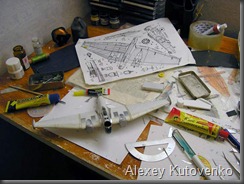
There were only few publications on K-12. The first – and best for scratchbuilder – is the article in magazine “Modelist-Konstructor” 1989-01. It contains short story of K-12 and drawings by Milyachenko. There are the only published drawings of this planes nowadays. In some other and newer books, for example, Yefim Gordon’s “Soviet X-planes” (2000) in fact we can see nothing new but parts of Milyachenko drawings.
Other sources include articles in Russian magazine “Samolety mira” and Ukrainian “Aviation and Time”. In first of them we can find rare photos of K-12 – some kind of walkaround, very useful for painting the “Zhar-Ptitsa” scheme. Second contains essay about life of Konstantin Kalinin and photo of mock-up of this unusual plane. Some good quality photos of K-12 can be seen in book “100-years history of “Flying wing” by Sokolov (2001). This book also gives good coverage of K-12’s story and test flights. In about a year after my finishing of K-12 model on Russian web site “Ugolok Neba” (www.airwar.ru) appeared photo of K-12 cockpit.
The drawings are quite good and give impression not only about shapes of plane, but of its inner structure, which is important in making model’s interior. Milyachenko in general is known as accurate specialist in soviet aviation. But in comparison with photos, drawings of K-12 have some mistakes, I think because most photos of K-12 were published many years after this article in “Modelist-Konstructor”.
First are engines and their cowlings. On drawings we definitely see shapes of M-25 engines, but all other sources mentioned above tell that K-12 tested with M-22 engines installed. Use of M-25 were planned but it is very little chance that they were really mounted on the plane. So if we are talking about “Zhar-ptitsa” configuration, we should keep in mind that engines must be M-22 and dimensions of cowlings on drawings must be corrected. As we can find, their shape due to photos, is correct.

Second nuance are side windows. Due to photos they must consist of two clear parts on both sides of the plane. On drawings and color scheme placed in “Modelist-Konstructor” this thing was shown not quite clear.
Third is weapons. Real K-12 newer flew with armament mounted. Drawings show us planned look of this plane with two ShKAS machine guns in turrets and bombs in bay. Here and there we can also find color profiles of K-12 with machine guns in standard soviet pre-war green and blue painting. It is fiction look. No sources or photos prove it was real.
Conditions of my working place for modeling were not perfect at time when I built K-12 (2003). So I tried to keep its construction as simple as possible. It means you won’t find here high-tech, state-of-art technologies. Instead of this, I had to use simple materials ant techniques. Main construction materials were thin (0,3mm) plastic sheets, paper and aluminum foil.

First step in building of the model was wing. It consist of two plastic longerones and six nervures. Then it was covered with plastic sheet. Linen was imitated with wire and paper. It was pervaded with acrylic hairdresser lacquer. It is very simple technique with quite good looking result. Nowadays I make linen imitation in different way – more difficult and with use of only plastic parts which gives more crisp detailing. After that were mounted metal parts of wing – all of them were made of 0,1mm aluminum foil and brass wire.
Central part of fuselage was also made from thin plastic sheet, two frames, two stringers and cowered with paper. Interior details made from brass wire, foil and plastic parts. After that I made plastic punches for metal parts and formed on them foil panels. Then I formed inner layer of foil, on which outer foil panels were clued. The engine cowlings were made with the same technique. Engines itself I took from two ICM I-5 fighters plastic model kits. They are good in shape and very well detailed.
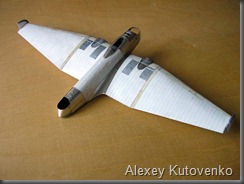
The gap between fuselage and wing was filled with epoxy putty, formed with right shape and then cowered with previously formed foil parts. Wheels I took from spare plastic parts – I think every modeler have plenty of them. I used old Frog/Novo Ventura wheels – their diameter matched my needs well. I corrected their shape and add some extra details. Other chassis details were made of steel wire, which I took from paper clip.
Clear parts are vacu-formed from plastic. I took it from Intel processors or Kingston computer memory packages - I don’t exactly remember and I think that any similar material will give the same effect. Canopy and turrets were detailed with foil and mounted with Humbrol Clear-Fix.
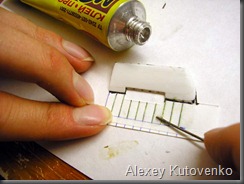
The most exciting moment in building K-12 model for me was, of course, painting. It will be a sin to build K-12 model and not to paint it as “Zhar-Ptitsa”! At the moment of building I didn’t have some photos that I have now, so I made the same mistake as the artist in “Modelist-Konstructor” magazine and airbrushed the model with red on top and blue on bottom surfaces. Now I believe that the plane should be overall red, but it is my subjective opinion based on photo analysis. Then I covered the model with semi-gloss lacquer and let it dry out for three days.
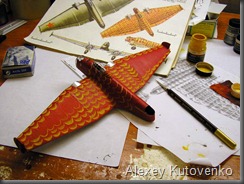
“Feathers” on real plane were hand-painted with brushes. I think that there were two unnamed painters – one of them used plenty of paint and made thick strokes. The other draw with thin lines that were a lot like some kind of hairbrush. I took very thin artist brush and also hand-painted all feathers with ModelMaster enamel. I did my best to imitate this two styles of unnamed artists of the thirties years. After that I airbrushed the model with another lacquer layer. No weathering effects were applied. I believe that the real plane can’t get dirty during only few test flights. Only washing was used on cowlings and wheels.
You can read German version of this article with more photos in Modell Panorama 2009-03 (IPMS Austria) magazine.
